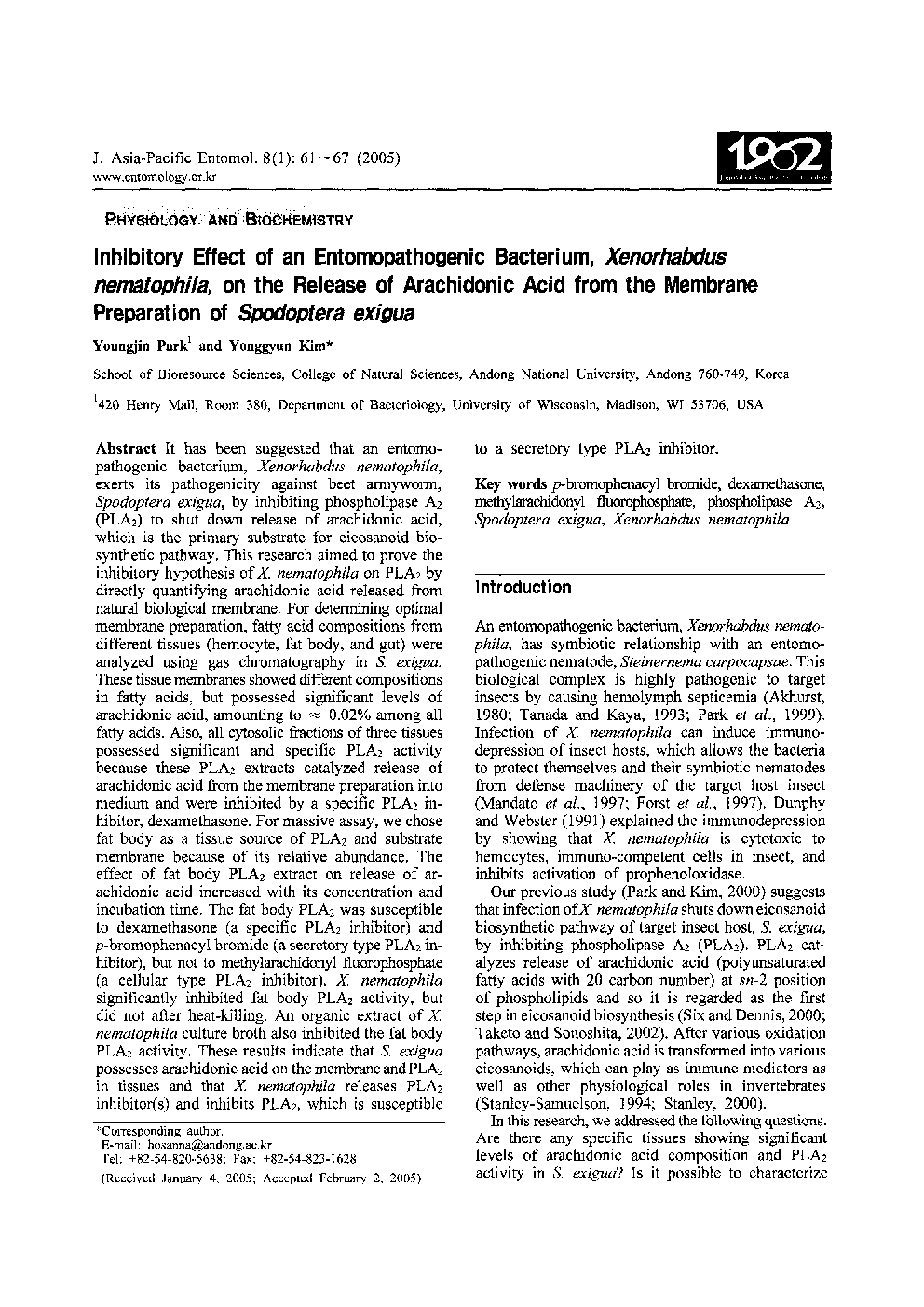| Article ID | Journal | Published Year | Pages | File Type |
|---|---|---|---|---|
| 9476759 | Journal of Asia-Pacific Entomology | 2005 | 7 Pages |
Abstract
It has been suggested that an entomopathogenic bacterium, Xenorhabdus nematophila, exerts its pathogenicity against beet armyworm, Spodoptera exigua, by inhibiting phospholipase A2 (PLA2) to shut down release of arachidonic acid, which is the primary substrate for eicosanoid biosynthetic pathway. This research aimed to prove the inhibitory hypothesis of X. nematophila on PLA2 by directly quantifying arachidonic acid released from natural biological membrane. For determining optimal membrane preparation, fatty acid compositions from different tissues (hemocyte, fat body, and gut) were analyzed using gas chromatography in S. exigua. These tissue membranes showed different compositions in fatty acids, but possessed significant levels of arachidonic acid, amounting to â 0.02% among all fatty acids. Also, all cytosolic fractions of three tissues possessed significant and specific PLA2 activity because these PLA2 extracts catalyzed release of arachidonic acid from the membrane preparation into medium and were inhibited by a specific PLA2 inhibitor, dexamethasone. For massive assay, we chose fat body as a tissue source of PLA2 and substrate membrane because of its relative abundance. The effect of fat body PLA2 extract on release of arachidonic acid increased with its concentration and incubation time. The fat body PLA2 was susceptible to dexamethasone (a specific PLA2 inhibitor) and p-bromophenacyl bromide (a secretory type PLA2 inhibitor), but not to methylarachidonyl fluorophosphate (a cellular type PLA2 inhibitor). X. nematophila significantly inhibited fat body PLA2 activity, but did not after heat-killing. An organic extract of X. nematophila culture broth also inhibited the fat body PLA2 activity. These results indicate that S. exigua possesses arachidonic acid on the membrane and PLA2 in tissues and that X. nematophila releases PLA2 inhibitor(s) and inhibits PLA2, which is susceptible to a secretory type PLA2 inhibitor.
Keywords
Related Topics
Life Sciences
Agricultural and Biological Sciences
Animal Science and Zoology
Authors
Youngjin Park, Yonggyun Kim,
